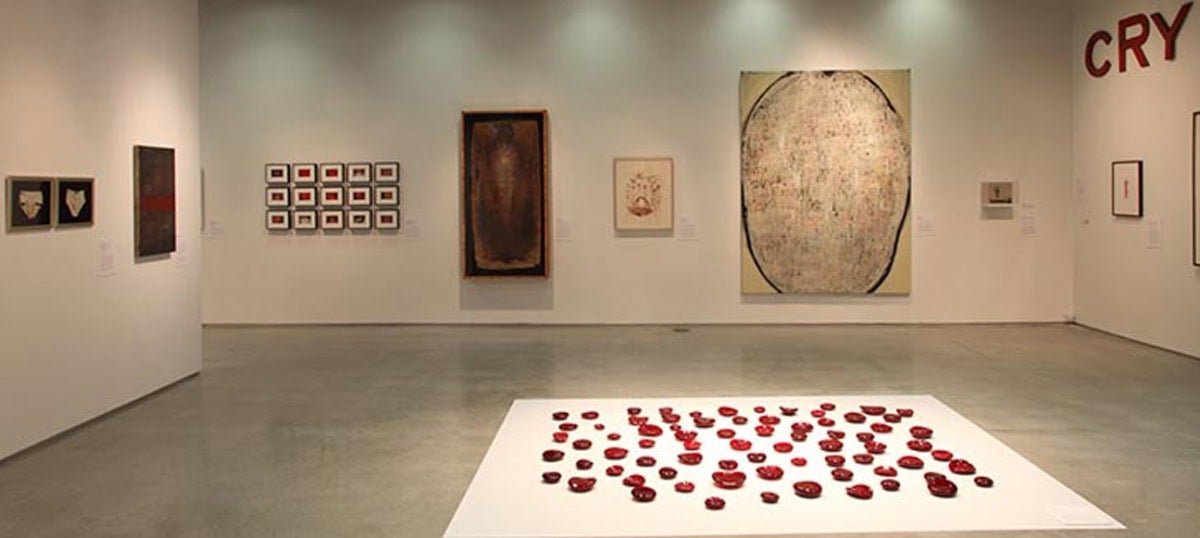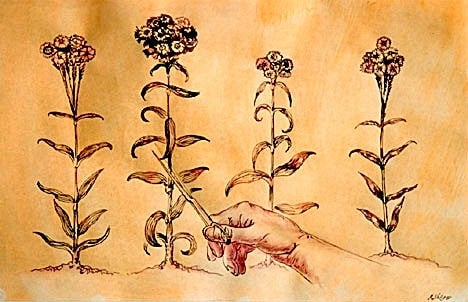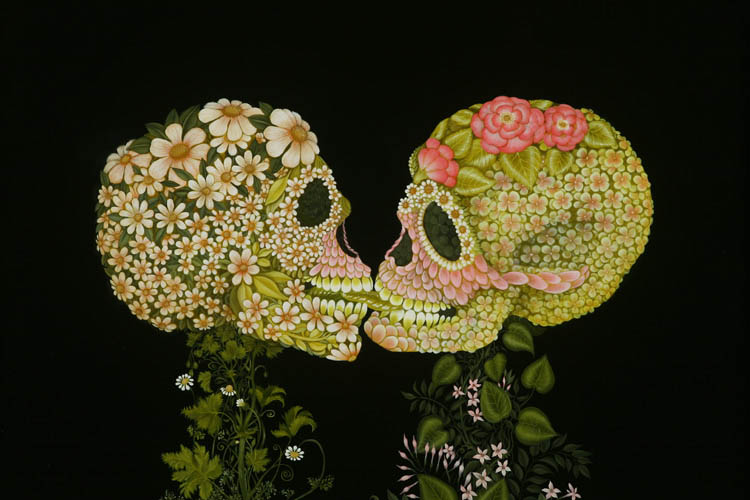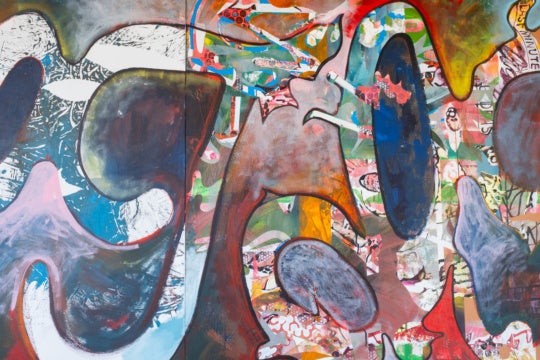
Conservative Cobb County politicians are hate-bating voters by calling out the Zuckerman Museum of Art’s “Art AIDS America” exhibition, which closes tomorrow after a three-month run. What started off as a bit of provincial criticism in the Marietta Daily Journal quickly escalated until State Representatives Earl Ehrhart (R-Powder Springs) and Ed Setzler (R-Acworth), and State Senator Lindsey Tippins (R-Marietta) joined the paper’s outrage machine.
Tellingly, the Marietta review starts off with Monet’s Water Lilies as an example of artistic perfection and sets out to prove how far from that 19th-century standard this show has fallen (is the reviewer aware that Monet’s paintings were scandalous in their day?). The reviewer discusses conceptual works of art, such as a poster stack by Felix Gonzalez-Torres, without bothering to learn about or convey their meanings. As with other instances of overwrought, uninformed reactions to contemporary art, the three conservative lawmakers jumped on the vitriolic bandwagon, even though they had not all seen the exhibition.
In a follow-up article, the lawmakers told the Marietta Daily Journal that the exhibition was “sickening” and said that the art was garbage deserving of a sewage treatment plant. Ehrhart, who chairs the state committee for university funding, threatened to pull funding from Kennesaw State University (where the ZMA is located) because of the show. He likened KSU’s bringing “Art AIDS America” to Georgia Tech’s mishandling of rape accusations on campus. According to the Atlanta Journal-Constitution, Ehrhart did not see the show itself, only photographs.

Ehrhart singled out the work of KSU professor Robert Sherer as particularly offensive. Sherer uses a mixture of HIV+ and HIV- blood as pigment for his drawings. Ehrhart’s comparison of the work to deadly Ebola was disconcertingly similar to the 1980s hysteria against HIV+ people.
“I give uneducated people more credit than I should,” said Sherer. “I come from Alabama and I have country folk in my family. They are intelligent enough to know HIV can’t jump from the glass to a viewer and infect someone. They know HIV doesn’t survive outside the body. For a lawmaker to say my work could infect people shows their ignorance on the issue. There is no such thing as creating a mild-mannered saccharine show on the subject of HIV/AIDS. You can’t do it. The subject matter is very much alive and potent, and has been a major political struggle. I don’t like the idea of a politician who doesn’t know anything about art and culture offering up their good ol’ boy critique of the subject.”

ZMA director Justin Rabideau notes that, for some, “‘Art AIDS America’ is a first introduction to the very human tragedy of HIV and AIDS in America. For others, the art reflects and commemorates their own personal memories and present-day experiences with AIDS.” He said that “in the opening week of ‘Art AIDS America’ at the ZMA, the U.S. Centers for Disease Control and Prevention published a study reporting half of all black gay and bisexual men will be diagnosed with HIV,” adding “we believe that reinvigorating the dialogue about HIV/AIDS will help to educate our communities that we serve and help combat the spread of this disease.”
The ignorance of these lawmakers surrounding HIV is perhaps the most outrageous part of this debacle. The Atlanta Metro area currently faces an HIV epidemic of urgent nature. Some zip codes in Atlanta have HIV infection rates similar to third-world African countries, and we are doing a poor job of reaching young people at risk for HIV infection. Not only does “Art AIDS America” show the historical impact of HIV, it also reminds us that it is not over. Sherer says many of his students were clueless about HIV; some thought it was something only gay people could get, some thought the epidemic was over, and many had no clue they could be at risk. Sherer says “Art AIDS America” has been an effective teaching tool for showing this young generation that HIV is, indeed, prevalent in their world. His students responded positively to the show, he says, especially because they are familiar with canonical artists like Keith Haring, who is in the show. Sherer believes the politicians are using fear-mongering tactics to drum up conservative support right before an election.
Hunter O’Hanian, director of the Leslie Lohman Museum of Gay and Lesbian Art, agrees that this controversy is political posturing. His organization partially funded “Art AIDS America” so it could travel across the country.
“They are using language of hate,” says O’Hanian. “To call art trash or garbage is an obvious attempt to denigrate what’s being shown. It is an attempt to intimidate educators and other planners when they threaten continued funding. This goes back to the culture wars of the late 1980s, Jesse Helms, Pat Buchanan, and others who tried to rally support by throwing shade on marginalized communities. They are forwarding their own agenda at the expense of marginalized groups. To try to win arguments on the backs of marginalized sections of our community is reprehensible.”
Sherer calls the brouhaha contrived conservative outrage. “To have somebody have take issue with a show that students and faculty has loved so much has been a real sucker punch to us. Don’t you think it’s strange they waited until the show is closing to throw this punch?”
“Art AIDS America” closes on Sunday, May 22, and will move on to Chicago and the Bronx.
Matthew Terrell writes, photographs, and creates videos in the fine city of Atlanta. His work can be found regularly on the Huffington Post, where he covers such subjects as the queer history of the South, drag culture, and gay men’s health issues. He was a participant in Cycle 2 of BURNAWAY’s Art Writers Mentorship Program.




